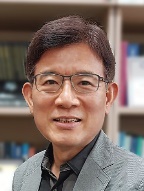Keynote Speakers
Orbital Angular Momentum : Future of Optical Wireless for 6G and beyond
Abstract: 6G is envisioned to support newly emerging services such as hyper-connected living, AI empowered autonomous services, and extended digital reality. To meet this challenge, one important requirement is to deliver the data at a very high data rate of 1 Tbps or higher. In this talk, a vision of future optical wireless communications will be presented, which will break the barrier of the fundamental constraint of bounded capacity. Orbital angular momentum (OAM), which is often regarded as twisted light, is capable of providing theoretically unbounded channel capacity as each twisted OAM beam is spatially orthogonal to all other OAM beams with different OAM modes. The talk will begin with the principle of OAM and focus on how to achieve a Tbps data rate for future optical wireless. It will also highlight potential applications of OAM associated with 6G services. Some preliminary results will be presented to confirm its potential for a candidate 6G technology.
Biography: YEON HO CHUNG (M’93, SM’17) is a Professor of the Department of Information and Communications Engineering, Pukyong National University, Busan, Korea. He obtained an MSc. from Imperial College London, U.K. in 1992 and a Ph.D. from the University of Liverpool, U.K. in 1996. He was a visiting professor at Pennsylvania State University, University Park, U.S. and also at Chiba University, Japan. He was a foreign expert for the GIAN program of the Government of India in 2017. He was keynote speakers for IFIP WMNC 2018 and CSNDSP 2020. He is the Editor-in-Chief of International Journal of Sensors, Wireless Communications and Control, Bentham Science Publishing. He is also a member of the Editorial Board of Wireless Personal Communications, Springer and is an associate editor of IEEE Access. He received the Top 2014 Paper Award from Transactions on Emerging Telecommunications Technologies (ETT), Wiley and the Best Paper Award from the ICUFN 2019. He also received the Busan Science and Technology Award for outstanding research achievements in 2020. His research interests are visible light communications, optical camera communications, optical scattering communications, optical healthcare systems, and advanced wireless transmission schemes.
Optical Wireless Communications for Space and Sea Applications
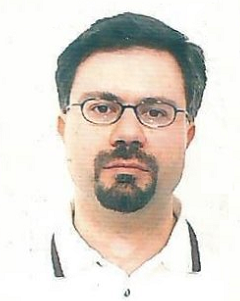
Prof. Ernesto Ciaramella
Scuola Superiore Sant'Anna University,
Pisa, ITALY
ernesto.ciaramella@santannapisa.it
Personal webpage
Abstract:We review most recent research in the exploitation of Optical Wireless Communications (OWC) in sea and in space. First, we illustrate how OWC can be used in underwater communications, and present some recent implementations and the results in sea tests. We then explain how OWC can be used to transmit signals inside common spacecrafts or nano-satellites. Finally, we discuss prospects of OWC for satellite-to-ground communications at very high speed.
Biography: Ernesto Ciaramella is Professor of Telecommunications at Scuola Superiore Sant'Anna, Pisa, Italy. He previously was a researcher at Alcatel, at Fondazione Ugo Bordoni (FUB), and at Centre for Studies and Laboratories in Telecommunications (CSELT). At CSELT, he was part of the working group that wrote the guidelines for the installation of WDM systems in the optical network of Telecom Italy. His research interests include various areas of optical communications (components, systems, networks). His main research contributions are related to schemes for the regeneration of the optical signals, design of WDM systems for transport networks and access, and free-space optical systems (optical wireless communications). He is author or co-author of about 250 publications and holds 25 international patents. He participated in several European research projects. He has been coordinator of the EU-FP7 project COCONUT (2012-2015), on coherent systems for WDM PON access networks. He is now principal investigator of ESA-TOWS project, about optical wireless systems. Prof. Ernesto Ciaramella served as a member of the Technical Programme Committee (TPC) in the two major conferences on optical communications (OFC and ECOC). He has been Associate Editor of IEEE Photonic Technology Letters and of OSA Journal of Optical Communication and Networking.
Jamming in Free Space Optics
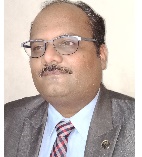
Prof. Manav Bhatnagar
Indian Institute of Technology Delhi,
New Delhi, India
manav@ee.iitd.ac.in
Personal webpage
Abstract:In recent years, free space optical (FSO) communication has emerged to imprint its valuable contribution in high speed wireless communication society due to its manifold advantages. FSO systems have immense potential for providing high-data-rate communication link and can be easily deployed over wide ranges of applications. However, reliable communication cannot be assured in security-constrained protocol-based FSO applications (especially in military platforms) due to technical constraints imposed on FSO system design and deployment (like high field-of-view, confined optical wavelengths). Under such technical circumstances, the FSO system may become vulnerable as it can be hampered by intentional or unintentional jammer that cannot be easily avoided by the legitimate sources. So, it becomes crucial to investigate different protocol based FSO systems to explore the performance statistics in presence of detrimental jamming activity and also to develop communication strategies to alleviate the impact of jamming during the data transmission between the authorized users.
Biography: Manav R. Bhatnagar (M04-SM13) received M.Tech. degree in communications engineering from the Indian Institute of Technology Delhi, New Delhi, India, in 2005 and the Ph.D. degree in wireless communications from the Department of Informatics, University of Oslo, Oslo, Norway, in 2008. From 2008 to 2009, he was a Postdoctoral Research Fellow with University Graduate Center (UNIK), University of Oslo. He held visiting appointments with the Wireless Research Group, Indian Institute of Technology Delhi; the Signal Processing in Networking and Communications (SPiNCOM) Group, University of Minnesota Twin Cities, Minneapolis, MN, USA; the Alcatel-Lucent Chair, SUPELEC, France; the Department of Electrical Computer Engineering, Indian Institute of Science, Bangalore, India; UNIK, University of Oslo; the Department of Communications and Networking, Aalto University, Espoo, Finland; and INRIA/IRISA Laboratory, University of Rennes, Lannion, France. He is currently a Professor with the Department of Electrical Engineering, IIT Delhi, New Delhi, India, where he is also a Brigadier Bhopinder Singh Chair Professor. His research interests include signal processing for multiple-input-multiple-output systems, cooperative communications, non-coherent communication systems, distributed signal processing for cooperative networks, multiuser communications, ultrawideband-based communications, free-space optical communication, cognitive radio, software defined radio, power line communications, molecular communications, and satellite communications. Dr. Bhatnagar was selected as an Exemplary Reviewer of the IEEE Communications Letters for 2010 and 2012, and an Exemplary Reviewer of the IEEE Transactions on Communications for 2015. Currently, he is an Editor of the IEEE Transactions on Communications. He has been an Editor of the IEEE Transactions on Wireless Communications during 2011-2014. He has received the NASI-Scopus Young Scientist Award 2016 in engineering category, the Shri Om Prakash Bhasin Award in the field of Electronics & Information Technology for the year 2016, and the Hari Om Ashram Prerit Dr. Vikram Sarabhai Research Award 2017. He is a Fellow of the Institution of Engineering and Technology (IET), U.K., the Indian National Academy of Engineering (INAE), the National Academy of Sciences, India (NASI), the Institution of Electronics and Telecommunication Engineers (IETE), India, and the Optical Society of India (OSI).
Key technologies for visible light communication in 6G
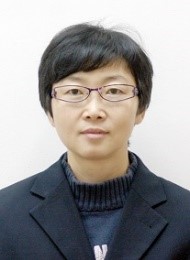
Prof. Nan Chi
School of Information Science and Engineering,
Fudan University, China
Personal webpage
Abstract: The wireless data traffic poses a big challenge for the 6th generation (6G) wireless communication network, requiring new technologies to provide ultrahigh data rate, wide-coverage, low latency and low power cost. Visible light communication (VLC) is emerging as a promising candidate to address the challenge by virtue of ultrawide spectrum resource (400-800 THz). In this paper, we aim to present the prospects, challenges and latest progress of VLC in the 6G wireless network. Particularly, we demonstrated the high-speed VLC application of silicon-substrate LEDs and achieved the error-free data rate of 24 Gbps. We also experimentally demonstrated 100-m car headlight communication for the Internet of Vehicle (IOV). It is envisioned VLC will become an indispensable part of 6G given its characteristic of high data rate, encouraging more novel concepts and applications for 6G.
Biography: Professor Nan Chi is with School of Information Science and Engineering, Fudan University, China. She received the BS degree and PhD degree in electrical engineering from Beijing University of Posts and Telecommunications, China. She is the author or co-author of more than 300 papers and has been cited more than 8900 times. She has been awarded as The National Science Fund for Distinguished Young Scholars, the New Century Excellent Talents Awards from the Education Ministry of China, Shanghai Shu Guang scholarship. Her current research interests include advanced modulation format, optical packet/label switching, optical fiber communication and visible light communication. She is a fellow of the OSA.
Optical Wireless Communications: Opportunities, Unique Use Cases and Research Challenges
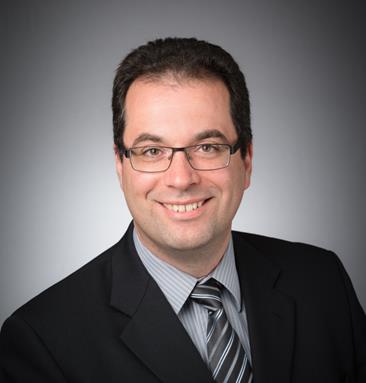
Prof. Steve Hranilovic
Dept. Electrical & Computer Engineering,
McMaster University, Canada
Personal webpage
Abstract: This talk presents a broad overview of the work of the Free-space Optical Communication Algorithms Laboratory (FOCAL) at McMaster University in Hamilton, Canada in developing novel optical wireless systems. The main thrusts of the group will be highlighted by emphasizing several recent contributions. Developments in the signalling design for visible light communication (VLC) systems will be presented along with several prototype VLC communication systems. Complementary visible light sensing applications will be introduced in particular for indoor localization and fall detection using indoor illumination devices. Some perspectives on our work on fundamental information theoretic limits of optical wireless channels will be provided and insight on optimal signalling design provided. An overview of our work on algorithms and experiments in long range free-space optical channels, underwater optical wireless and space-based laser communications will also be highlighted. Finally, a vision for optical wireless technologies into the 6G era will be presented along with our ongoing research directions.
Biography: Steve Hranilovic received the B.A.Sc. degree with honours in electrical engineering from the University of Waterloo, Canada in 1997 and M.A.Sc. and Ph.D. degrees in electrical engineering from the University of Toronto, Canada in 1999 and 2003 respectively. He is a Professor in the Department of Electrical and Computer Engineering, McMaster University (Hamilton, Ontario, Canada) and currently serves as the Associate Dean (Academic). During 2010-2011 he spent his research leave as Senior Member, Technical Staff in Advanced Technology for Research in Motion, Waterloo, Canada. His research interests are in the areas of free-space and optical wireless communications, digital communication algorithms, and electronic and photonic implementation of coding and communication algorithms. He is the author of the book Wireless Optical Communication Systems (New York:Springer, 2004). Dr. Hranilovic is a Fellow of the IEEE and of Optica and is a licensed Professional Engineer in the Province of Ontario. In 2016 the title of University Scholar was conferred upon him by McMaster University. He has served as an Associate Editor for the Journal of Optical Communications and Networking and an Editor for the IEEE Transactions on Communications in the area of Optical Wireless Communications.
